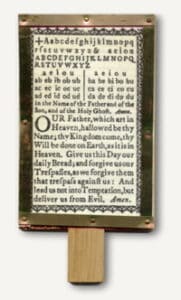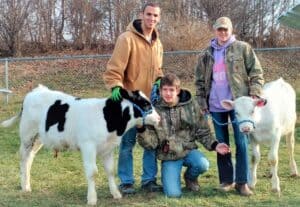Vocational Education Through the Years
By John Marks, Curator of Collections
Vocational education has been on my mind the last few years as my son has gone through high school. I’ve said for years that I want him to be a welder, a plumber, or be in some recession-resistant trade. Now a senior, his aptitudes aren’t in that direction and he’s considering college.
In the 1970s, my high school experience was that college was a dividing line: you went to college if you were smart, you learned a vocational skill through BOCES if you weren’t. I was interested in the culinary arts program at Wayne-Finger Lakes BOCES, but my parents made it clear I was too smart for that…whatever that meant. Many years later, I learned about Howard Gardner’s theory of multiple intelligences, to wit, there are different kinds of smart.
 Beginning in the 1600s, American educational goals focused on life skills. Children needed to read so they could understand the Bible. Literacy began with horn books at a young age. A horn book was a single page mounted on wood and covered with – you guessed it – a thin sheet of horn for protection. It had letters, the Lord’s Prayer, and sometimes vowels and numbers.
Beginning in the 1600s, American educational goals focused on life skills. Children needed to read so they could understand the Bible. Literacy began with horn books at a young age. A horn book was a single page mounted on wood and covered with – you guessed it – a thin sheet of horn for protection. It had letters, the Lord’s Prayer, and sometimes vowels and numbers.
While colonial youth learned many useful skills at home by doing chores, they could become apprentices. Boys and girls learned trades by working for master craftsmen, usually for seven years. Apprenticeships were a source of labor for craftsmen; children began by doing unskilled but necessary tasks. When they “graduated,” apprentices had a trade to support themselves.
In the 1800s, private academies and common (public) schools both taught practical skills for employment. Academies taught higher level skills such as surveying, navigation, and agriculture. In 1813, state superintendent of education Gideon Hawley stated:
[Common schools] are designed to fit youth for active life, and useful avocations; ornamental accomplishments are to be sought elsewhere.
Many common school students didn’t continue past the eighth grade, so teachers pushed basic literacy and math skills. Today in the Finger Lakes, Mennonites operate successful businesses with an eighth-grade education.
 In 1908, New York State began giving state aid for vocational education programs. As courses expanded, more students attended and graduated high school. In the late 1960s, regional Boards of Cooperative Educational Services (BOCES) began building centralized vocational education centers for rural school districts.
In 1908, New York State began giving state aid for vocational education programs. As courses expanded, more students attended and graduated high school. In the late 1960s, regional Boards of Cooperative Educational Services (BOCES) began building centralized vocational education centers for rural school districts.
Today, Wayne-Finger Lakes BOCES operates two Technical and Career Centers in Newark and Stanley. There are courses that have been offered for decades: construction, service industry, automotive technology, and agriculture. Two new programs are P-Tech and New Visions. P-Tech offers a high school diploma coupled with an associate degree in a technology field. New Visions is a one-year course for high school seniors that offers instruction and hands-on experience in medical and therapy careers.

A P-Tech Class
You can learn about all the programs and services of Wayne-Finger Lakes BOCES at https://www.wflboces.org/. Our Director of Education Anne Dealy has written several blog articles education and I added to the list last month with an article about the beginning of DeSales High School. The articles are listed below –
- DeSales High School
- Early Schools of Geneva
- Founding of the Geneva School District
- Free Schools for Geneva
- Geneva School Expansion and Reform
- Segregated Schools in Geneva’s Past
- What We Learned In School: 19th-Century Schoolwork
